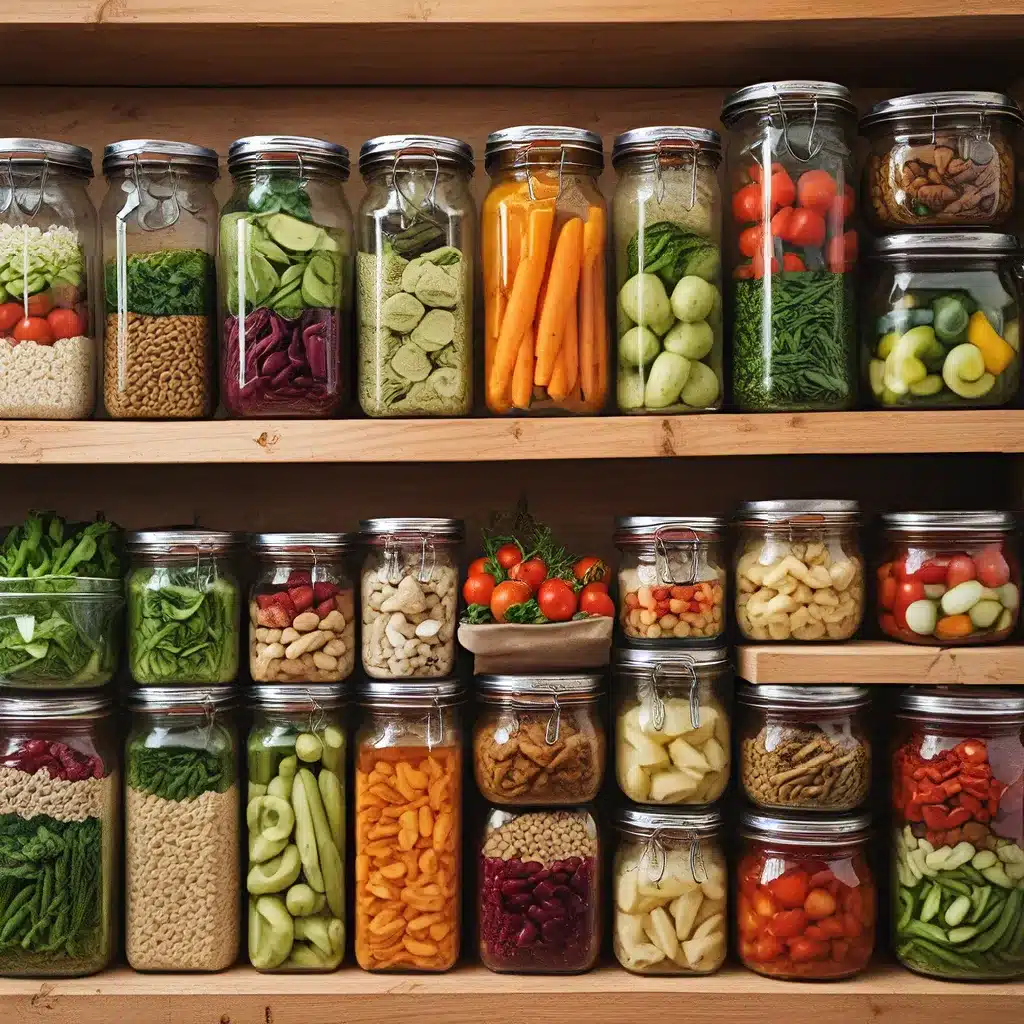
As someone who’s lived on sustenance homesteads, volunteered at food forests, and scoured grocery store dumpsters for culinary treasures, I’ve seen firsthand the staggering amount of food that gets needlessly tossed aside. It’s a problem that plagues our modern culture of abundance, where we’ve somehow lost touch with the resourcefulness and creativity that defined our ancestors’ relationship with food.
But fear not, my fellow food-saving enthusiasts – I’m here to share the secrets of culinary longevity and help you become a master of food preservation. Because let’s be real, who needs another overpriced poutine dish when you can turn that moldering produce into a work of art?
Debunking the Myths of Food Decay
First and foremost, let’s address the persistent myth that food will rot and decay no matter what. Not true, my friends! As I discovered through my extensive testing in the world of Outward, there are ways to significantly slow down food decay, even when it’s not being carried around.
The key lies in utilizing the power of alchemy bags and preservation bags. These magical containers can reduce food decay by up to 75%, even when your edible treasures are sitting on the floor of your home. And get this – the decay timer completely stops while you’re in a loading screen, as long as the food is on the floor. So, remember to drop your bag when resting in a tent to keep your snacks at their freshest.
But wait, there’s more! Zone travel doesn’t have any additional impact on food stored on the floor or in a bag, so you can confidently explore the far reaches of the land without worrying about your provisions spoiling.
The Truth About Expiration Dates
Now, let’s talk about those pesky expiration dates that have been brainwashing us into tossing perfectly good food. According to the USDA, these dates are mostly for quality, not safety. In fact, the Natural Resources Defense Council estimates that 68% of all food discarded in American kitchens is still perfectly edible.
So, how do you determine when food has truly gone bad? Trust your senses. Give it a good sniff, take a small taste, and use your best judgment. If it looks, smells, and tastes fine, it’s probably not going to harm you. And remember, those hard cheeses and veggies with a little mold? Just cut off the affected bits and you’re good to go.
Rediscovering the Lost Art of Food Preservation
Our ancestors were masters of preserving food, using techniques like fermentation, salting, and pickling to ensure their culinary creations lasted for ages. And you know what? We can still tap into those time-honored traditions today.
Did you know that alcohol is a natural food preservative, capable of killing off pesky bacteria, yeast, and fungus? A little bit of lemon juice, lime juice, or vinegar can also work wonders in keeping your produce fresh and flavorful.
But it’s not just about the food itself – it’s also about our mindset. We’ve become so accustomed to the convenience of modern food systems that we’ve forgotten the joy of being resourceful. Remember those heirloom tomatoes I found myself drowning in? Turning them into sun-dried tomatoes, salsa, and even skin-care products was not only a delicious adventure, but it also scratched that creative itch that’s been begging for attention.
Embracing the Culinary Creativity of Food Waste
And speaking of creative adventures, let’s dive into the world of food waste-turned-culinary-masterpieces. Did you know that curry was reportedly invented to cover the taste of spoiled meat? Or that kimchi was likely discovered when fermentation transformed discarded cabbage rinds? The possibilities are endless when you start to see food not as waste, but as a canvas for culinary exploration.
So, the next time you find yourself with a surplus of overripe bananas or a mysterious blend of leftovers, don’t just resign yourself to the trash. Unleash your inner chef and get experimenting! Who knows, you might just stumble upon the next big thing in the world of fermentation or come up with a signature dish that puts your fancy restaurant to shame.
Changing the Narrative, One Meal at a Time
At the end of the day, the food waste epidemic we face today is not just an environmental issue – it’s a cultural and psychological one. We’ve been conditioned to see food as disposable, when in reality, it’s a precious resource that deserves our respect and creativity.
But by reclaiming our connection to the food we consume, we can start to shift the narrative. Let’s embrace the role of resourceful scavengers, passionate preservers, and culinary alchemists – because when we do, we not only reduce waste, but we also rediscover the joy and satisfaction that comes from transforming humble ingredients into something truly extraordinary.
So, my fellow food-saving enthusiasts, let’s roll up our sleeves, get a little dirty, and prove to the world that waste is only a state of mind. After all, as the wise folks at Saint Marc USA would say, no remarkable journey is achieved without great effort. And trust me, the culinary rewards are well worth it.

